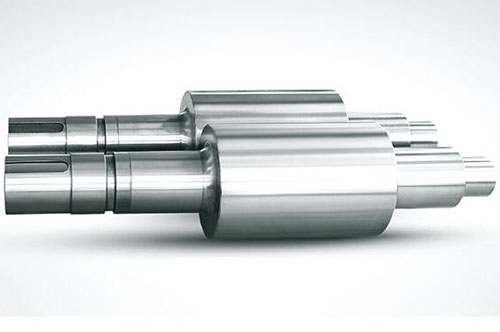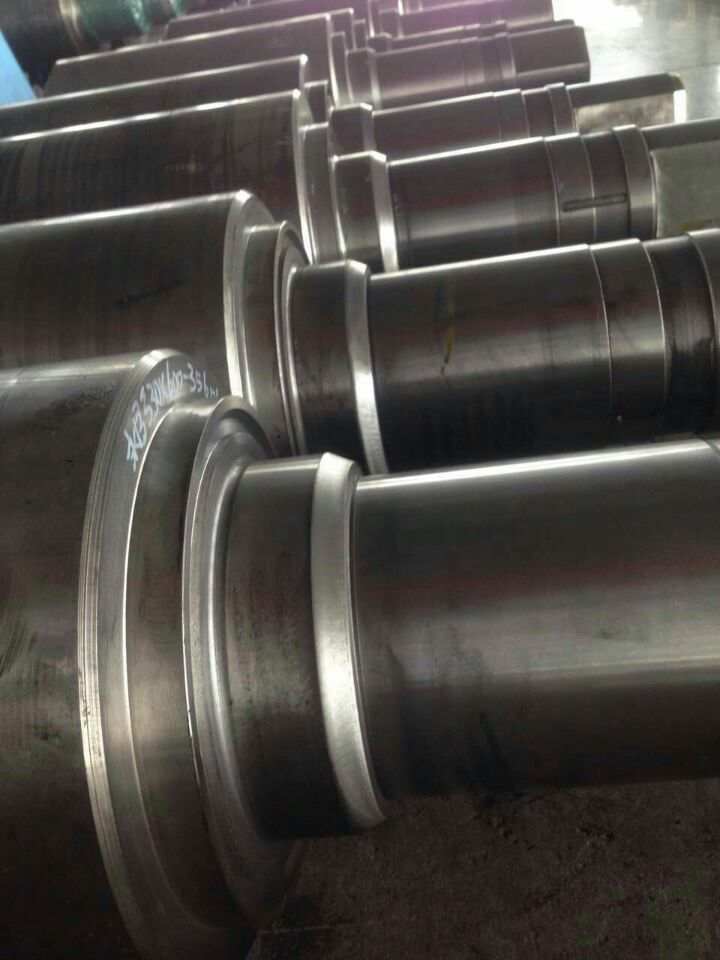Bainitic Nodular Cast Iron Roll
Introduction
Bainitic nodular cast iron roll is a kind of spheroidal graphite iron roll, which is known as ductile iron roll and is a roll made by spheroidizing the molten iron with magnesium and pouring it into the sand-lined cold type. Due to the spheroidizing treatment, the graphite carbon inside the cast iron is changed from flake to spheroid, which eliminates the phenomenon of graphite tip stress concentration caused by flake graphite, which significantly improves the strength of cast iron, similar to the cast steel roll, but the abrasion resistance is much higher than the cast steel roll. There are three types of nodules of magnesium, cerium, and calcium and magnesium are commonly used. Spheroidal graphite iron roll can be applied in open-rolling mills, roughing mills and rolling mills before finishing rolling on various sections and plates. When the finished roll bears a large load, it is best to use a ductile iron roll with a casting groove, high strength and excellent wear resistance.
Bainitic nodular cast iron roll is made of Ni, Mn, CrH, Mo, etc. It has an acicular structure and would be higher strength and better toughness than pearlite iron. Due to the high alloy content and high casting stress, the acicular bainite ductile iron roll can obtain the ideal comprehensive performance by a centrifugal composite casting process. The feature of Bainitic nodular cast roll is that it shaped into graphite ball and its performance can be compared with that of alloy indefinite chilled roll. Its intensity is higher than that of indefinite chilled one, so it is usually used for rest energy casting. The bainitic nodular roll manufactured by TINVO has the standards including ISO, GB, ASTM, DIN, JIS, high quality with the best price guaranteed.
Based on the analysis of the macro and microstructures of conventional Ni-Mo bainite ductile cast iron rolls used in bar finishing mills, we have found that the main cause of the spalling failure of the roll surface layer is the low bainite mass fraction in the roll structure, Irrational distribution of carbide morphology, and non-round graphite morphology.
On this basis, by optimizing the mass fraction of alloying elements of conventional bainite nodular cast iron composite rolls (nickel, copper, niobium composite alloying), the purpose of optimizing the structure and properties of the rolls is achieved. The structure of the improved roll is finer, and its carbide morphology has been significantly improved; meanwhile, the addition of alloying elements has significantly improved the bainite strength in the material, and its impact toughness, deflection, section shrinkage, and elongation after fracture are significantly improved compared with conventional Ni-Mo ductile iron, so it can significantly extend the service life of rolls and effectively reduce the production cost of steel.
Chemical Composition
Roll name | C | Si | Mn | Cr | Ni | Mo | Mg |
AF1 | 3.00~3.50 | 1.60~2.40 | 0.40~1.00 | 0.10~0.40 | 1.20~2.00 | 0.20~0.60 | ≥0.04 |
AF2 | 3.00~3.50 | 1.40~2.20 | 0.40~1.00 | 0.20~1.00 | 1.50~2.50 | 0.30~0.80 | ≥0.04 |
AF3 | 3.00~3.50 | 1.20~2.0 | 0.40~1.00 | 0.20~1.00 | 2.00~3.00 | 0.30~0.80 | ≥0.04 |
Physical Properties
Roll name | Roll-body hardness HSD | Tensile strength Mpa |
AF1 | 40~55 | ≥360 |
AF2 | 50~65 | ≥360 |
| AF3 | 60~72 | ≥360 |






